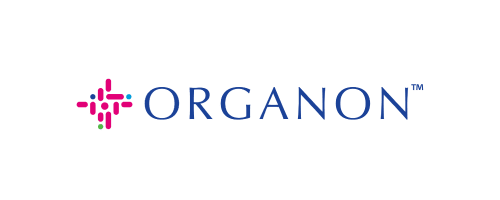Shifting Sales Strategies, Agile Alignment:
3 Biopharma Success Stories
3
Field teams created in one quarter with no additional resources
2
Person field force effectiveness team easily supports all field teams
1
Weekend’s worth of work on alignments cut to 1 hour
Last year, the FDA approved 55 novel drugs — more than double the number of new products approved 15 years ago. As biopharma innovation accelerates, new product launches and indication expansions have become the norm, impacting downstream sales and marketing strategies.
As a result, it’s becoming harder to get healthcare professionals’ (HCPs’) limited time and attention, making it vital for the field and home office to work together. “Your quarterly and annual sales alignments might go smoothly, but the real test is navigating strategic pivots that affect rosters and territories,” the sales systems manager at a leading biopharma says.
Product launches, expansions, and even organizational and territory changes come with high expectations from leaders and stakeholders. Three biopharma operations teams share how they handle field strategy changes without involving their IT departments:
- A top 10 biopharma fixed the labor-intensive and lengthy process of implementing field feedback into new plans of action.
- A medium-sized company established three new field teams in the same quarter to accommodate new sales strategies.
- An emerging biopharma rapidly changed the sales team’s focus from HCPs to healthcare organizations (HCOs).
Having a means for faster field force deployment, field feedback, and territory alignment processing improves home office productivity and allows field users to better serve their customers.
“When the business comes to us with last-minute changes, new requirements, and changes to alignment, we need to easily integrate that into plans of action and open it for feedback.” – Sales systems manager at a top 10 biopharma
Simpler processes to handle feedback from field reps
To maximize field force productivity, it is critical to ensure field users engage with the right customers in their territory, and home office analytics can only go so far. As a result, the sales systems manager at a top 10 biopharma prioritizes sales rep and MSL feedback to ensure her team delivers the right alignments and targets. “When the business comes to us with last-minute changes, new requirements, and changes to alignment, we need to easily integrate that into plans of action and open it for feedback,” she says.
The challenge: A two-person field force effectiveness (FFE) team supports every field rep. Manually implementing new plans of action multiple times a year ate into home office and field reps’ time, dragging down productivity. For example, the FFE team would distribute Excel sheets of target lists to reps who make modifications, often based on discussions outside of CRM. Once district managers approved newly modified target lists, the FFE team consolidated and finalized them. These back-and-forth data adjustments were time-consuming and error-prone. Stakeholders were ready for a more agile way to gather and incorporate feedback into plans.
Solution and results: The company consolidated feedback collection into a single in-system process to reduce the need for hands-on intervention from the FFE. The sales systems manager says the results were immediate in helping to minimize errors and give reps and support teams time back. “Right away, we saw the benefits of Align. We now set up product alignments and territories, load targets, model it, and then get feedback,” she says.
Reps access Align feedback directly in Veeva Vault CRM. There, they can modify their target list and engagement goals and provide reasons for their changes. “We also loaded segmentations and script-level data, so reps have a good visualization of their targets for a plan of action before they request changes,” she adds.
Once reps complete their modifications, district managers are alerted to review them. When the feedback loop is closed, the FFE team extracts the data and performs a holistic overview to ensure the target lists are accurate and meet the business strategy for the plan of action. “Everything is systematically updated. The reaction to the automation was incredible; the reps loved it. Our managers benefit because reviewing and approving changes is much easier. It’s also great that it’s in one system, directly in the CRM,” she says. The sales support team also helps conserve IT resources by owning the alignment process while better supporting the field.
“The future of what we can do with alignments and deployment is exciting. It’s a continuing push toward being more agile for your field and home office.” — Field operations director at a medium-sized biopharma
Standing up 3 field teams simultaneously
“The future of what we can do with alignments and deployment is exciting. It’s a continuing push toward being more agile for your field and home office,” the field operations director at a medium-sized biopharma says. For seven years, he has led alignments and targeting efforts across multiple franchises, including specialty and rare diseases. Rapid growth recently tested his team’s capacity: The company restructured its biggest team, made the largest acquisition in company history, and is preparing for another launch without additional resources.
The challenge: The operations team needed to establish three new field teams — one contracted, one in a new treatment area, and a hybrid team — all in the same quarter using existing internal team resources. In addition, there were complexities to navigate; for example, the field teams would share some reps. “We didn’t want to do manual data loads or other tasks that we could automate or solve using business rules or technology,” he says.
Solution and results: Standardizing and automating alignments with Align enabled the team to meet their deadline. “From what would take a couple of months five years ago today takes five or six hours in Align — a big help because we haven’t received more resources,” the field operations director says. Even though the new territories were designed outside of Align, the operations team created rules to assign accounts to the right territories and build and manage CRM users. “Probably the biggest amount of work we do these days from a deployment standpoint today is simply communicating what is supposed to happen,” he adds.
The team was mindful of avoiding alignment conflicts that could create bottlenecks. For reps from separate field teams covering some of the same accounts, the home office would need the capability to move targets dynamically. “With Align, our CRM lead and alignment lead can work together, often finding a new segmentation or a tweak on segmentation. In more complicated scenarios, we use pilots to do account exclusions, hierarchy-based assignments, and overlap, which are all things we couldn’t have done without a more sophisticated tool,” the field operations director says.
He adds that the company previously conducted testing in sandbox environments, which required numerous, time-consuming steps. With Align’s modeling capabilities, production data is tested without a sandbox. He says, “Our UAT instance isn’t always a great reflection of the real world. We’ve removed that piece, and it saves time and improves accuracy.”
“I remember full weekends scheduled down to the quarter and half hour — seven or eight people working the entire weekend for a new alignment. Now it takes minutes or hours.” — Business systems manager at an emerging global biopharma
An emerging biopharma flips the script to focus on HCOs
A business systems manager with 14 years of experience supporting reps knows change is constant. “Your team gets out in the field, you start gathering intelligence, and you realize you need to adjust,” she says. You can’t plan for everything in a dynamic market, but you can prepare for how you’ll adapt. “Have a very good relationship with your operations teams. That’s critical.”
The challenge: As the company’s business unit matured, sales reps struggled to identify and reach the right HCPs. Sales leadership determined they’d get better results by focusing their field teams at the HCO level. The shift required operations to quickly identify the HCOs and then bring the related HCPs into the alignment. Accuracy was paramount — rep confidence in their alignment can erode if they find errors.
Solution and results: The fix was to update the account assignment rules, which the business systems manager did in less than an hour. Her operations team had asked for a resolution within a couple of weeks. “I remember full weekends scheduled down to the quarter and half hour — seven or eight people working the entire weekend for a new alignment. Now it takes minutes or hours.”
She created new field force rules in Align to assign HCOs and a second rule to assign the related child HCP accounts. In thinking through the options to test the new alignment, the manager says she could make changes in a sandbox or use modeling, explaining that she prefers modeling. “Anyone who has seen Dr. Strange knows about the mirrored dimension where you could go and practice and not impact the real world. That’s what modeling is in using your production data from Vault CRM. You’re in this space inside a live production instance where you can test with the data — pull in territories, adjust them, and make changes — but until you publish the model, it doesn’t impact the CRM,” she says.
Her experience taught her the benefits of internally owning alignments instead of needing to pull in IT or using a third party. In addition to facilitating fast, transparent, and high-quality changes, she is a better partner to commercial colleagues. “Even if you haven’t launched a team yet, in Align, you don’t have to pull data out of the CRM or from a data warehouse to do the analysis. No more loading ATLs, wiping out a ‘zip to terr,’ and reloading a new one. And you have territory and position alignment history.”
The business systems manager says her confidence in the relationships between the HCPs and HCOs was high going into the alignment because the company also uses Veeva Network for master data management and Veeva OpenData for customer records.How agile and well-integrated is your approach to field planning? Learn from other biopharmas prepared to adapt to continuous change in their go-to-market strategies.


